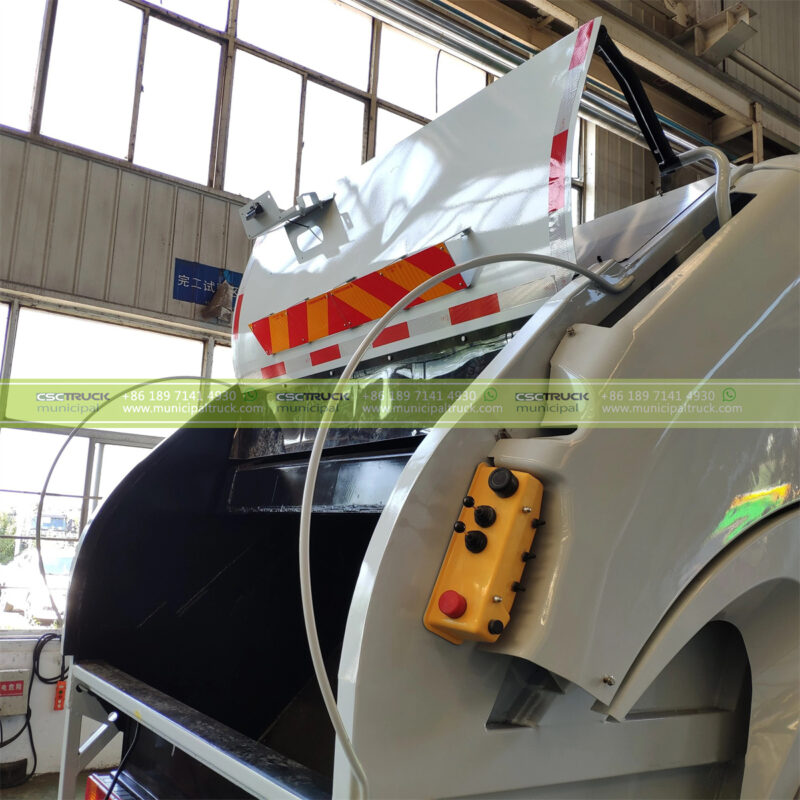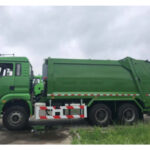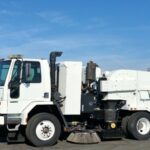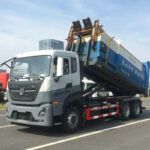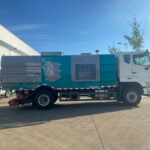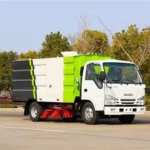Urban waste collection presents a complex logistic puzzle, particularly within the labyrinth of older city cores, dense historic districts, and tightly packed residential neighborhoods characterized by constricted roadways. Choosing the right collection vehicle isn’t merely about capacity; it’s fundamentally about maneuverability, accessibility, and operational safety within challenging spatial confines. While various technologies exist, the rear loader garbage truck frequently emerges as a strong contender for navigating these narrow arteries. But is it definitively the “best”? This analysis delves into the mechanics, advantages, limitations, and strategic context to understand its suitability.
The Narrow Street Conundrum: Unique Challenges for Waste Collection
Navigating waste collection in areas with limited street width involves overcoming significant hurdles beyond simply fitting the vehicle down the road. Key challenges include:
- Spatial Constraints: Streets barely wider than the truck itself, often flanked by parked vehicles, leave minimal margin for error. Turning radii become critical, especially at tight corners or dead-ends common in historic grids. Overhead obstacles like low-hanging branches or signage further complicate passage.
- Accessibility Issues: Traditional automated side loaders (ASL) require significant clearance on the curb side for the robotic arm to extend, grasp containers, and swing them overhead – space often unavailable when cars are parked inches from the curb. Front loaders need large, unobstructed areas for bin placement and require the truck to approach dumpsters head-on, impractical on narrow, one-way streets.
- Operational Safety: Limited visibility for operators and drivers, the constant risk of clipping parked cars or property with protruding equipment (like ASL arms or front loader forks), and the potential hazard to pedestrians or sanitation workers forced to navigate minimal space between the truck and obstacles are paramount concerns.
- Resident Impact: Noise, potential property damage, and traffic disruption are magnified in close quarters, demanding equipment and practices that minimize neighborhood intrusion.
Rear Loader Mechanics: Designed for Human-Centric Collection
Understanding the rear loader garbage truck‘s design is crucial to evaluating its fit. Its core operational principle relies on manual labor at the collection point:
- Collection: Crew members (typically two sanitation workers) manually wheel standard rollout carts or carry bags/cans from the curb or alley to the rear of the truck.
- Loading: Waste is emptied into a hopper located at the back of the vehicle, directly accessible from ground level.
- Compaction: A powerful, hydraulically actuated packing blade (or panel) systematically compresses the waste from the hopper into the main storage body, maximizing payload capacity before the blade retracts for the next load.
- Transport: Once the body is full, the compacted waste is transported to the transfer station or landfill and ejected, often via a hydraulic ejector panel pushing the load out the rear.
This process inherently avoids the large, sweeping mechanical arms or bulky front-end lifting mechanisms of automated or semi-automated counterparts.
Advantages in Tight Quarters: Why Rear Loaders Shine on Narrow Streets
The fundamental design of the rear loader garbage truck translates into distinct operational benefits within spatially restricted environments:
- Minimal Curb-Side Clearance Required: Unlike ASLs needing a wide berth for arm extension or front loaders requiring space for large dumpsters, rear loaders primarily need enough width for the truck body itself and space for workers to safely walk between the curb and the truck. They can operate effectively even with cars parked very close to the curb, as the loading action is vertical at the very rear.
- Superior Maneuverability (Relative to Size): While not as small as mini-skid steers, modern rear loaders are built on relatively compact commercial chassis. Crucially, the absence of protruding side arms significantly reduces the vehicle’s effective operating width. Drivers navigate narrow passages focusing on the truck body’s footprint, not the swing radius of external equipment.
- Enhanced Driver Visibility & Control: The driver’s position offers a direct line of sight down the sides and rear of the truck via mirrors. Maneuvering cautiously in tight spots relies on this visibility, aided by potential backup cameras. The driver controls the truck’s movement precisely without coordinating complex external machinery during collection stops.
- Flexibility in Collection Points: Rear loaders excel in alleyways, service lanes, and streets where bins might be placed inconsistently or where obstacles prevent standardized automated cart placement. Crews can navigate around parked cars or street furniture to retrieve bins manually.
- Handling Diverse Waste Streams: They efficiently collect bagged refuse, loose cans, bulky items (within reason), and yard waste placed at the curb without requiring specialized carts, offering flexibility often needed in older neighborhoods lacking uniform cart programs.
Limitations and Considerations: Not a Universal Panacea
Despite these strengths, labeling rear loaders as the absolute “best” requires acknowledging their inherent challenges and trade-offs:
- Labor Intensity & Safety: The fundamental reliance on manual loading creates ongoing risks for sanitation workers, including musculoskeletal injuries from lifting and repetitive motion, potential exposure to hazards within the waste stream, and vulnerability in traffic. This necessitates rigorous safety protocols, training, and potentially higher labor costs and challenges in recruitment compared to more automated systems.
- Slower Collection Pace: Manual loading is inherently slower than the rapid cycle times of an ASL grabbing a standardized cart. Covering the same number of stops takes longer, impacting route efficiency and potentially requiring more trucks or crews for dense areas.
- Potential for Litter: Spillage during manual emptying or from overfilled hoppers can occur, requiring diligent crew practices to maintain cleanliness.
- Noise: While modern units incorporate noise reduction features, the compaction cycle can be noticeably loud in quiet neighborhoods, especially during early morning collections.
- Weather Vulnerability: Crew productivity and safety can be severely impacted by adverse weather conditions like heavy rain, ice, or extreme heat.
Strategic Fleet Integration: Rear Loaders in the Municipal Toolkit
The choice isn’t merely rear loader or something else; it’s about deploying the right tool strategically within a municipal fleet:
- Niche Optimization: The rear loader garbage truck demonstrably shines as the optimal solution for the specific niche of historic districts, tight urban cores, alleys, and older suburbs with chronic parking constraints and narrow rights-of-way where automated arms simply cannot function effectively. Here, its maneuverability and minimal curb-side footprint are paramount advantages.
- Complementing Automation: In many municipalities, rear loaders operate alongside ASLs. ASLs efficiently service wider suburban streets with consistent cart placement and ample clearance, maximizing speed and reducing labor needs. Rear loaders handle the complex, constrained routes where automation fails. Front loaders remain essential for commercial dumpster service.
- Specialized Applications: Rear loaders are also often used for bulky item collection routes due to their large hopper opening and ability to handle irregular items, a task less suited to automated systems.
- Operational Strategies for Efficiency: Maximizing the rear loader’s effectiveness involves optimizing routes to minimize deadheading and left turns, utilizing GPS tracking for real-time monitoring, implementing rigorous worker safety and ergonomics programs, and potentially transitioning to semi-automated systems (where carts are mechanically tipped into the hopper by the crew, reducing lifting) on appropriate routes.
- The Holistic Fleet Approach: Ultimately, an efficient municipal solid waste management program leverages a diverse fleet. The rear loader garbage truck is an indispensable workhorse for conquering the unique challenges of narrow streets, working in concert with automated side loaders for efficiency in suitable areas, front loaders for commercial duty, and potentially specialized compactors or roll-off trucks for specific waste streams. Each municipal truck plays a vital role in the intricate system of keeping communities clean, with the rear loader’s niche firmly established where the pavement narrows and space is at a premium. Selecting it isn’t about rejecting modernity, but about pragmatic adaptation to the realities of constrained urban geography.

